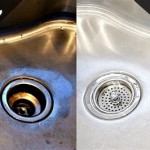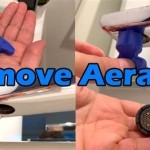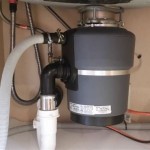Pfister Pop-Up Sink Stopper: A Comprehensive Guide
The Pfister pop-up sink stopper is a common component in bathroom sinks and sometimes kitchen sinks, designed to provide a convenient and effective way to retain water. It is a mechanical device that allows users to easily fill and drain the sink without having to manually place and remove a separate stopper plug. This article will explore the detailed functionalities, potential issues, troubleshooting, and replacement procedures associated with Pfister pop-up sink stoppers.
The primary function of the pop-up stopper is to create a watertight seal in the sink drain, preventing water from escaping. This allows the sink to be filled for various tasks such as washing hands, face, or small items. When the user is finished, the stopper can be easily released, allowing the water to drain quickly and efficiently. The mechanism is typically operated by a lift rod located behind the faucet, providing convenient access and operation.
Understanding the components of a Pfister pop-up sink stopper is crucial for effective troubleshooting and maintenance. The assembly generally consists of several key parts. These include the stopper itself, the flange that sits flush against the sink drain opening, the pivot rod that connects the lift rod to the stopper, the clevis screw and spring clip that secure the pivot rod to the lift rod, and the tailpiece that connects the drain assembly to the P-trap. Each component plays a vital role in the overall functionality of the stopper system.
The Mechanism of Operation
The Pfister pop-up sink stopper operates on a relatively simple lever system. When the lift rod behind the faucet is pulled upwards, it rotates the pivot rod. This rotation, in turn, lifts or lowers the stopper, depending on the initial position. A downward motion of the lift rod causes the stopper to seal the drain opening, while an upward motion releases the stopper, allowing water to flow freely. The clevis screw and spring clip assembly allows for adjustment of the connection between the lift rod and pivot rod, enabling fine-tuning of the stopper's opening and closing behavior. The correct adjustment ensures the stopper seals properly without being overly difficult to operate.
The design of the stopper itself is also important for creating a reliable seal. Typically, the stopper has a rubber or silicone gasket around its base that conforms to the shape of the drain opening. This gasket provides a watertight barrier, preventing leaks when the stopper is in the closed position. Over time, this gasket can wear down, become brittle, or accumulate debris, leading to leaks and requiring maintenance or replacement.
The tailpiece connects the drain assembly to the P-trap, which is a curved section of pipe designed to trap water and prevent sewer gases from entering the home. The pop-up stopper assembly must be properly aligned with the tailpiece to ensure smooth drainage and prevent leaks. Misalignment can cause water to back up in the sink or leak around the connections.
Common Issues and Troubleshooting
Several common issues can arise with Pfister pop-up sink stoppers. One of the most frequent problems is a stopper that fails to seal properly, resulting in a slow drain or a sink that won't hold water. This can be caused by a worn or damaged gasket, debris lodged between the stopper and the drain opening, or misalignment of the pivot rod. Another common issue is a stopper that is difficult to open or close, which can be due to corrosion, mineral buildup, or a misadjusted lift rod assembly.
Troubleshooting these issues often involves disassembling the pop-up stopper assembly to inspect the components. The first step is usually to remove the stopper itself, which can often be done by simply lifting it out of the drain opening. If the stopper is stuck, it may be necessary to loosen the pivot rod and clevis screw to provide more clearance. Once the stopper is removed, the gasket and the drain opening should be thoroughly cleaned to remove any debris or mineral buildup. A mild cleaning solution and a soft brush can be used for this purpose.
If the gasket is worn or damaged, it should be replaced. Replacement gaskets are typically available at hardware stores or plumbing supply stores. When replacing the gasket, ensure that it is properly seated and aligned to provide a watertight seal. If the pivot rod is corroded or damaged, it may also need to be replaced. Corrosion can prevent the pivot rod from moving freely, causing the stopper to stick or bind. Lubricating the pivot rod with a silicone-based lubricant can also help to improve its operation.
Adjusting the lift rod assembly is crucial for ensuring proper stopper operation. The clevis screw allows for adjustment of the distance between the lift rod and the pivot rod, which affects the amount of travel required to open and close the stopper. If the stopper is not sealing properly, the clevis screw can be adjusted to increase the travel, ensuring that the stopper is fully closed. Conversely, if the stopper is difficult to open, the clevis screw can be adjusted to decrease the travel. It is important to make small adjustments and test the stopper operation after each adjustment to avoid over-adjusting the system.
Leakage around the drain flange is another potential issue. This can be caused by a worn or damaged plumber's putty or silicone sealant beneath the flange. To address this, the flange may need to be removed and resealed with fresh plumber's putty or silicone sealant. Ensure that the sealant is applied evenly and that the flange is properly tightened to create a watertight seal. Over-tightening can damage the flange or the sink, so it is important to use the appropriate amount of torque.
Replacement Procedures
In some cases, troubleshooting and repair may not be sufficient to resolve the issues with a Pfister pop-up sink stopper. If the stopper is severely damaged or if the components are excessively corroded, replacement may be the best option. Replacing a pop-up sink stopper is a relatively straightforward process that can be accomplished with basic plumbing tools.
The first step in replacing the stopper is to shut off the water supply to the sink. This is typically done by closing the shut-off valves located beneath the sink. Once the water is shut off, disconnect the tailpiece from the P-trap. This may require loosening a slip nut or disconnecting a threaded connection. Be prepared for some water to spill when disconnecting the tailpiece, so have a bucket or towels ready to catch any drips.
Next, loosen the nut that secures the drain flange to the sink. This nut is located beneath the sink, directly below the drain opening. Once the nut is loosened, the drain flange can be removed from the sink. Clean the sink surface around the drain opening to remove any old plumber's putty or silicone sealant. Apply a fresh bead of plumber's putty or silicone sealant to the underside of the new drain flange and insert the flange into the drain opening. Secure the flange by tightening the nut beneath the sink.
Connect the new tailpiece to the drain flange and the P-trap. Ensure that all connections are tight and properly aligned to prevent leaks. Install the new stopper, pivot rod, and lift rod assembly. Adjust the clevis screw to ensure proper stopper operation. Turn on the water supply and check for leaks around the drain flange, tailpiece, and P-trap. If any leaks are detected, tighten the connections as needed until the leaks are eliminated.
Choosing the correct replacement stopper is also important. Pfister offers various styles and finishes of pop-up sink stoppers to match different faucet designs. When selecting a replacement stopper, ensure that it is compatible with your sink and faucet configuration. Consider the material of the stopper and the drain flange. Brass and stainless steel are durable and corrosion-resistant options that can provide long-lasting performance. Chrome finishes are also popular for their aesthetic appeal and ease of cleaning.
Preventative Maintenance Strategies
Implementing preventative maintenance strategies can help to extend the life of a Pfister pop-up sink stopper and minimize the need for repairs or replacements. Regular cleaning of the stopper and drain opening can prevent the accumulation of debris that can cause leaks or blockages. Flushing the drain with hot water periodically can also help to dissolve grease and soap buildup.
Avoid using harsh chemicals or abrasive cleaners on the stopper or drain flange, as these can damage the finish or the rubber gasket. Instead, use a mild cleaning solution and a soft brush to clean the components. Periodically lubricating the pivot rod with a silicone-based lubricant can also help to prevent corrosion and ensure smooth operation. Inspecting the stopper and drain assembly regularly for signs of wear or damage can allow for early detection and correction of potential problems.
When using the sink, avoid dropping heavy objects into the drain, as this can damage the stopper or the drain flange. Be mindful of what is being washed down the drain. Hair, grease, and food particles can accumulate in the drain and cause clogs. Using a drain strainer can help to prevent these materials from entering the drain system. By following these preventative maintenance tips, you can keep your Pfister pop-up sink stopper in good working condition for years to come.

Pop Up Assemblies Pfister Faucets

Pfister Push And Seal Brushed Nickel Universal Sink Pop Up Drain At Com

Danco 3 5 8 In Pop Up Stopper For Pfister Chrome 80381

High Quality Pop Up Stopper Sink Drain For Pfister Series
Pfister 2 3 16 In Nickel Plated Plastic Pop Up Drain Stopper Mfr S47pskk Ace Hardware

Tuscan Bronze Genuine Replacement Part 972 022y All Metal Pop Up Drain Assembly Pfister Faucets

Danco 3 5 8 In Pop Up Stopper For Pfister Chrome 80381

How To Install A Push Seal Drain Pfister

My Pop Up Drain Is Not Draining Water

Everbilt 1 4 In Chrome Tub Pop Up Stopper Pfister 865490 The Home







